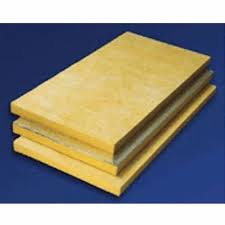
The Versatility and Benefits of PU Rigid Foam
Polyurethane (PU) rigid foam is a versatile material that finds applications in various industries due to its unique properties and benefits. This type of foam is created by mixing two liquid components – a polyol and an isocyanate – which react to form a rigid structure with excellent insulation properties.
Applications of PU Rigid Foam
PU rigid foam is widely used in the construction industry for insulation purposes. It provides superior thermal efficiency, helping to reduce energy consumption and maintain comfortable indoor temperatures. Additionally, PU rigid foam is used in the automotive sector for lightweighting vehicles and enhancing fuel efficiency.
Benefits of PU Rigid Foam
- Insulation: PU rigid foam has high thermal resistance, making it an ideal choice for insulating buildings and appliances.
- Strength: The rigid structure of PU foam provides excellent strength and durability, making it suitable for various structural applications.
- Lightweight: Despite its strength, PU rigid foam is lightweight, making it easy to handle and install.
- Versatility: This material can be molded into different shapes and sizes to meet specific project requirements.
- Sustainability: Some formulations of PU rigid foam are eco-friendly and contribute to energy efficiency in buildings.
Future Trends
As the demand for sustainable building materials grows, there is a rising interest in developing bio-based and recyclable versions of PU rigid foam. Researchers are also exploring ways to enhance the fire-retardant properties of this material to improve safety standards in various applications.
In conclusion, PU rigid foam continues to play a crucial role in modern industries due to its insulation capabilities, strength, versatility, and potential for innovation. With ongoing research and development efforts, this material is expected to remain at the forefront of technological advancements in the years to come.
Understanding PU Foam: Differences Between Rigid and Flexible Forms, Applications, and Characteristics of Hard PU Foam
- What is the difference between rigid and flexible PU foam?
- What is PU rigid foam?
- What is PU foam used for?
- What is hard PU foam?
What is the difference between rigid and flexible PU foam?
When comparing rigid and flexible PU foam, the key difference lies in their physical properties and intended applications. Rigid PU foam is characterized by its solid structure and high density, making it suitable for insulation, structural support, and packaging materials. On the other hand, flexible PU foam has a softer and more pliable texture, allowing it to conform to shapes and provide cushioning in products such as mattresses, upholstery, and automotive seating. While both types of PU foam are derived from similar chemical components, their distinct formulations result in varying levels of firmness and flexibility to cater to specific needs across industries.
What is PU rigid foam?
Polyurethane (PU) rigid foam is a specialized material formed by the reaction of two liquid components – a polyol and an isocyanate. This chemical reaction results in a rigid structure with excellent insulation properties, making PU rigid foam a popular choice for various applications. It is commonly used in industries such as construction and automotive for its thermal efficiency, strength, lightweight nature, and versatility. PU rigid foam serves as an effective insulating material that helps reduce energy consumption and maintain comfortable indoor temperatures. Its ability to be molded into different shapes and sizes makes it suitable for diverse structural requirements, while ongoing research aims to enhance its sustainability and fire-retardant properties for future advancements in the industry.
What is PU foam used for?
Polyurethane (PU) foam is widely used for a variety of applications due to its versatility and unique properties. PU foam is commonly used in the construction industry for insulation purposes, providing excellent thermal efficiency to buildings and helping reduce energy consumption. It is also utilized in the automotive sector for lightweighting vehicles, improving fuel efficiency, and enhancing comfort. Additionally, PU foam finds applications in furniture manufacturing, packaging, medical devices, and even in soundproofing solutions. Its ability to be molded into different shapes and sizes makes it a popular choice across industries where lightweight, durable, and insulating materials are required.
What is hard PU foam?
Hard PU foam, also known as polyurethane rigid foam, is a type of foam material that is characterized by its rigid and dense structure. It is created by mixing two liquid components – a polyol and an isocyanate – which react to form a solid, closed-cell structure. Hard PU foam offers excellent insulation properties, high strength, and durability, making it suitable for a wide range of applications in industries such as construction, automotive, and appliances. This material is commonly used for thermal insulation in buildings, lightweighting components in vehicles, and providing structural support in various products. Its versatility and performance make hard PU foam a popular choice for manufacturers seeking reliable and efficient solutions for their projects.
